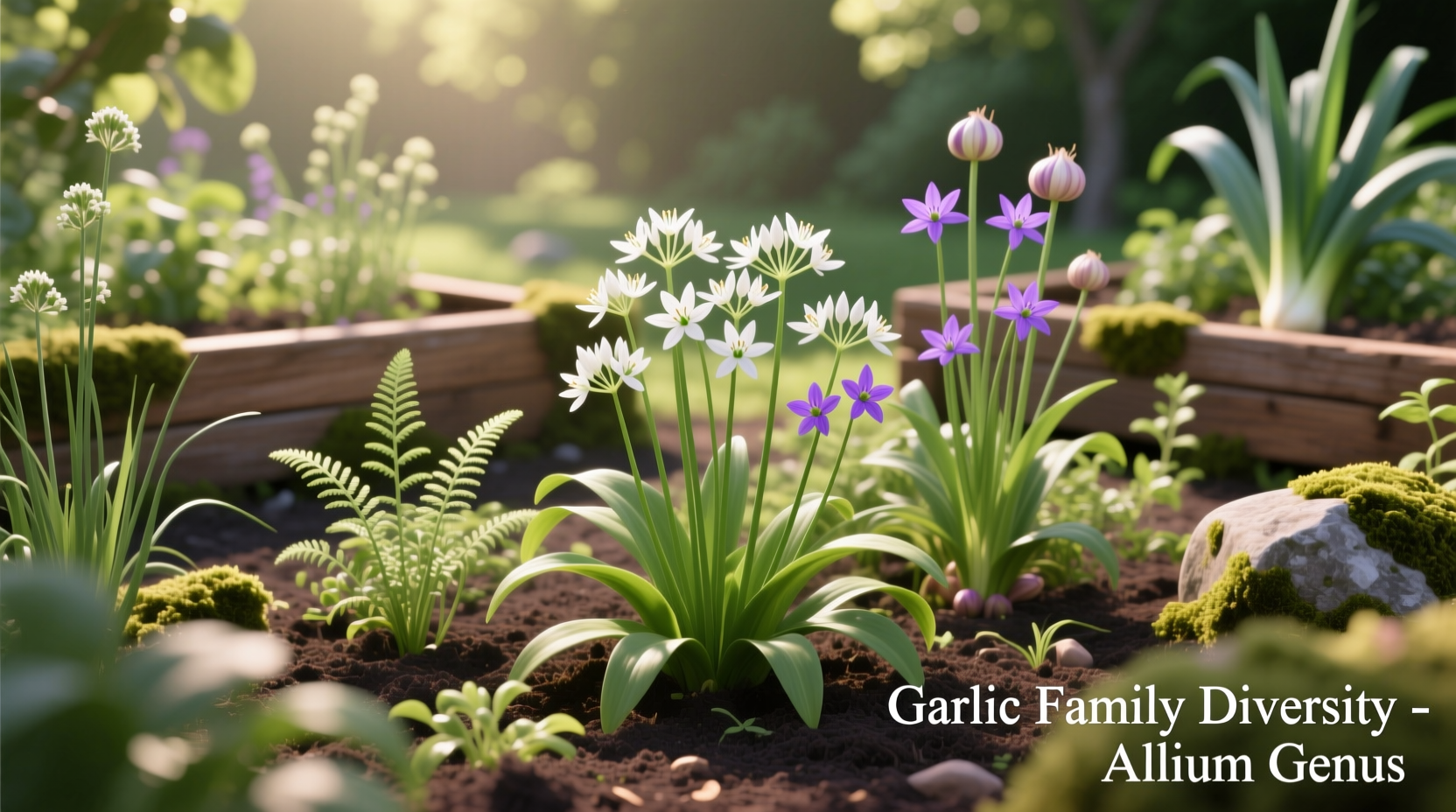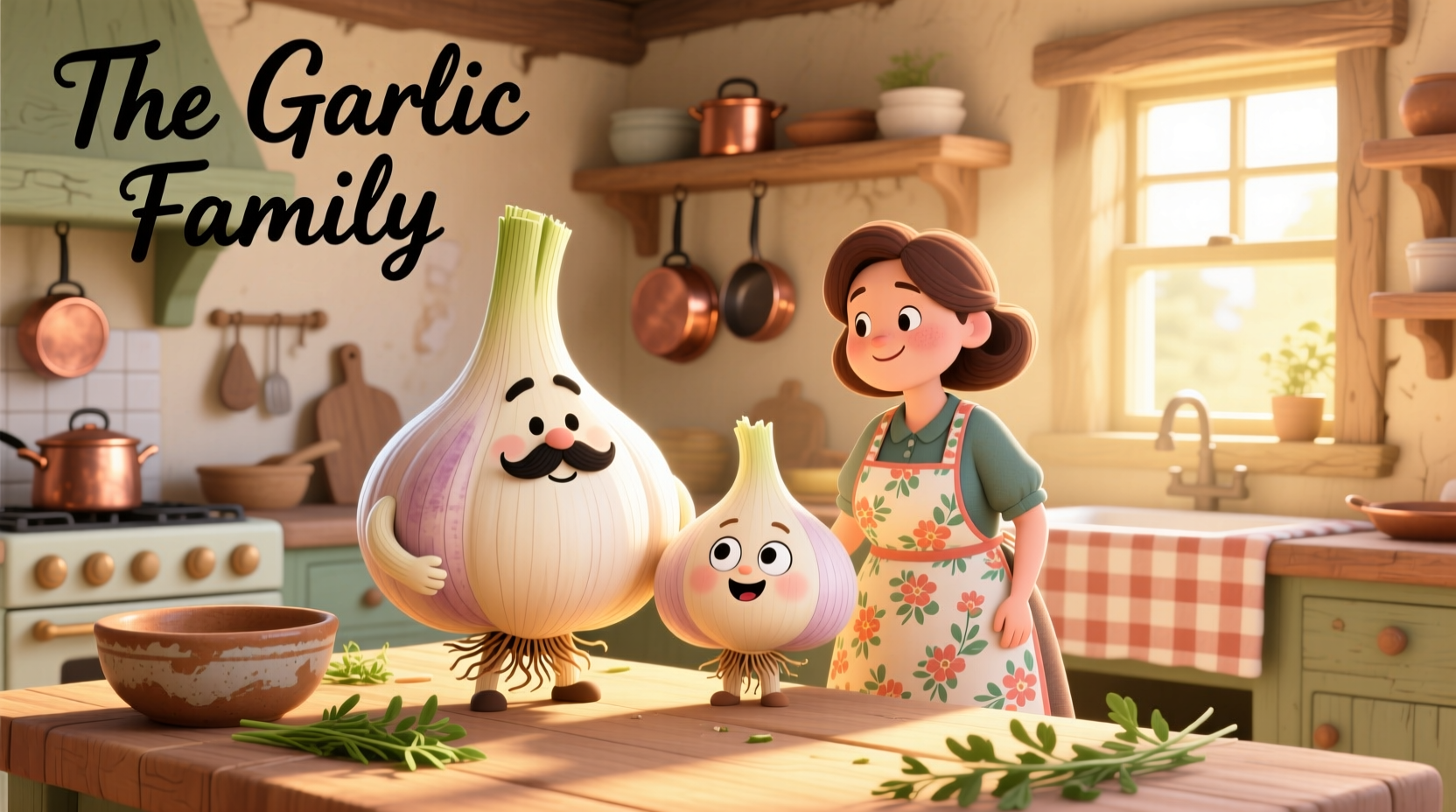The garlic family, scientifically known as Allium, includes over 900 species of bulbous plants such as garlic, onions, leeks, chives, and shallots. These plants share distinctive sulfur compounds that create their characteristic flavors and aromas while offering significant health benefits including cardiovascular support and immune system enhancement.
Discover everything you need to know about the Allium genus in this comprehensive guide. Whether you're a home gardener looking to cultivate these flavorful plants, a health-conscious individual interested in their medicinal properties, or a culinary enthusiast wanting to maximize flavor potential, this article delivers practical insights you can immediately apply.
Understanding the Allium Genus: More Than Just Flavor
When you chop an onion or crush a garlic clove, that distinctive aroma filling your kitchen comes from sulfur-containing compounds called thiosulfinates. These same compounds that make you tear up while preparing meals are responsible for the remarkable health properties of the Allium family. Unlike many other plant families, Allium species have evolved these sulfur compounds as natural pest deterrents, which coincidentally provide humans with powerful medicinal benefits.
Key Members of the Garlic Family
While "garlic family" commonly refers to plants related to garlic (Allium sativum), the Allium genus encompasses a diverse range of species with unique characteristics and uses. Understanding these differences helps you select the right variety for your culinary or gardening needs.
| Species | Common Name | Flavor Profile | Primary Uses | Hardiness Zone |
|---|---|---|---|---|
| Allium sativum | Cultivated Garlic | Strong, pungent when raw; mellow, sweet when cooked | Culinary, medicinal | 3-10 |
| Allium schoenoprasum | Chives | Mild onion flavor with grassy notes | Garnish, salads, dips | 3-9 |
| Allium porrum | Leek | Sweet, mild onion flavor | Soups, stews, roasting | 3-9 |
| Allium cepa | Onion | Sharp when raw; caramelized sweetness when cooked | Base for countless dishes | 3-10 |
| Allium ursinum | Wild Garlic/Ramsons | Milder garlic flavor with herbal notes | Pesto, salads, foraged dishes | 4-8 |
The Evolutionary Journey of Allium Plants
Allium species have accompanied human civilization for millennia, with their cultivation history revealing fascinating insights about human migration and cultural exchange. Archaeological evidence shows wild garlic consumption dating back to the Mesolithic period, approximately 10,000 years ago.
According to research published by the Royal Society, the domestication of garlic likely occurred in Central Asia before spreading along ancient trade routes. By 3200 BCE, Egyptians were cultivating onions and garlic, with records showing workers building the pyramids received garlic rations to maintain strength. Ancient Greek athletes consumed garlic before competitions, while Roman soldiers ate it for courage.
The timeline of garlic family cultivation demonstrates how these plants adapted to different climates and cultural practices:
- 10,000 BCE: Wild Allium species gathered by Mesolithic hunter-gatherers
- 3200 BCE: First documented cultivation in Egypt
- 1500 BCE: Garlic mentioned in ancient Indian medical texts for therapeutic uses
- 77 CE: Roman naturalist Pliny the Elder documents 24 medicinal uses of garlic
- 16th century: Allium species spread globally through European exploration
- 19th century: Scientific classification of Allium genus established
- 20th century: Modern agricultural techniques improve bulb size and storage capabilities
Health Benefits: What Science Says
The medicinal properties of garlic family plants have been recognized for centuries, but modern science has begun to validate many traditional claims. Research from the National Institutes of Health confirms that regular consumption of Allium vegetables correlates with reduced risk of several chronic diseases.
Allium plants contain organosulfur compounds that transform when cut or crushed, creating allicin and other bioactive substances. These compounds demonstrate:
- Cardiovascular protection: Studies show regular garlic consumption can reduce blood pressure by 5-10% in hypertensive individuals
- Antimicrobial properties: Effective against bacteria, viruses, and fungi, with research from Frontiers in Pharmacology confirming garlic's broad-spectrum antimicrobial activity
- Anti-inflammatory effects: May help reduce chronic inflammation markers
- Cancer risk reduction: Population studies indicate higher Allium consumption correlates with lower risk of certain cancers
It's important to note that these benefits are most pronounced with regular dietary consumption rather than occasional use. The World Health Organization recommends consuming 2-5 grams of fresh garlic (approximately one clove) daily for general health maintenance.
Maximizing Flavor in Your Kitchen
Understanding how to properly handle Allium plants dramatically impacts their flavor profile in your cooking. The key lies in managing the enzymatic reactions that occur when cells are damaged:
- For maximum pungency: Chop garlic and use immediately without cooking
- For milder flavor: Let chopped garlic rest for 10 minutes before cooking to allow flavor compounds to stabilize
- For sweet, caramelized notes: Cook onions slowly over low heat to develop natural sugars
- Preserving nutrients: Add garlic toward the end of cooking to preserve heat-sensitive compounds
Professional chefs recommend storing whole garlic bulbs in a cool, dark place with good air circulation. Avoid refrigeration, which can cause sprouting and texture changes. Once cloves are separated, they'll keep for about a week at room temperature.

Growing Your Own Allium Garden
Cultivating garlic family plants is accessible even for beginner gardeners. These hardy plants adapt well to various climates with proper care:
- Planting time: Garlic and onions grow best when planted in fall for spring harvest
- Soil requirements: Well-draining soil with pH between 6.0-7.5
- Water needs: Consistent moisture during active growth, reduced as harvest approaches
- Companion planting: Alliums repel many common garden pests, making them excellent companions for roses and tomatoes
For those with limited space, many Allium species thrive in containers. Chives and garlic greens can be grown indoors year-round with adequate sunlight. Simply place a green onion root in water, and you'll have fresh greens within days.
Contextual Considerations for Allium Consumption
While garlic family plants offer numerous benefits, certain considerations ensure safe and effective use:
- Medication interactions: Garlic may interact with blood thinners like warfarin. Consult your healthcare provider if taking medications
- Digestive sensitivity: Some individuals experience gastrointestinal discomfort with raw Allium consumption
- Storage limitations: Home-prepared garlic-in-oil mixtures require refrigeration to prevent botulism risk
- Culinary balance: Overuse can overwhelm delicate dishes; balance strong Allium flavors with complementary ingredients
Understanding these contextual boundaries helps you maximize benefits while avoiding potential issues. The therapeutic effects of Allium compounds develop gradually through consistent dietary inclusion rather than occasional heavy consumption.
Practical Applications for Everyday Life
Integrating garlic family plants into your daily routine doesn't require dramatic changes. Start with these simple, evidence-based approaches:
- Add minced garlic to morning scrambled eggs for sustained energy
- Include sliced onions in salads for added crunch and nutritional value
- Use chive blossoms as edible garnish for visual appeal and mild flavor
- Create a garlic-infused olive oil for dressings (refrigerate after 4 days)
- Grow green onions on your windowsill for continuous fresh supply
These practical applications make it easy to incorporate the benefits of the garlic family into your regular routine without significant lifestyle changes.
Frequently Asked Questions
What's the difference between hardneck and softneck garlic varieties?
Hardneck garlic (Allium sativum var. ophioscorodon) produces a flower stalk (scape) and typically has fewer, larger cloves arranged around a central stem. It offers more complex flavors but doesn't store as long (6-8 months). Softneck garlic (Allium sativum var. sativum) lacks the stiff central stalk, has multiple layers of cloves, stores longer (up to 12 months), and is the type commonly found in supermarkets. Hardneck varieties generally perform better in colder climates.
Can I substitute one Allium family member for another in recipes?
Yes, but with flavor adjustments. Generally, use 1 part garlic to replace 3 parts onion or leek due to garlic's stronger flavor. Chives can substitute for green onions at a 1:1 ratio, but add them at the end of cooking. When substituting shallots for onions, use 1.5 times the amount of shallots as onions since they're milder. Remember that each Allium has unique flavor compounds, so substitutions change the dish's character rather than providing identical results.
How do I prevent tears when cutting onions?
Cut onions under running water or near a fan to disperse the volatile compounds. Chilling onions for 30 minutes before cutting reduces enzyme activity. Use a sharp knife to minimize cell damage. Some professional chefs recommend wearing swim goggles for serious onion preparation sessions. Cutting near a source of running water in your sink creates a draft that pulls the sulfur compounds away from your face.
What causes garlic to turn green during pickling or cooking?
This natural color change occurs when garlic's sulfur compounds react with trace amounts of copper or other metals, or when acidic conditions trigger enzymatic browning. The green pigment (alliin) is harmless and indicates fresh, high-quality garlic. This reaction happens more frequently with immature garlic or when using certain types of cooking equipment. The color change doesn't affect flavor or safety, though some prefer to prevent it for aesthetic reasons by using non-reactive cookware.











 浙公网安备
33010002000092号
浙公网安备
33010002000092号 浙B2-20120091-4
浙B2-20120091-4